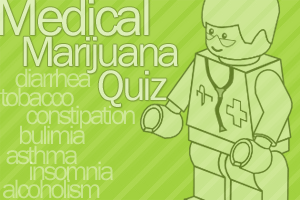It’s been dubbed the California Green Rush, but the explosive proliferation of pot farms to meet the sky-rocketing demand for medical marijuana is having some repercussions that are far from green. Local government officials and researchers in Humboldt and Mendocino counties say farmers are engaging in reckless forest clearing, illegal diversion of streams, and use of pesticides and fertilizers that are polluting the waterways and killing wildlife.
But county officials and local regulatory agencies are caught in a catch-22: The farming of marijuana—for medicinal use or otherwise—remains illegal under federal law. Any regulation instituted by these agencies is, in effect, legitimizing the cultivation of a federally controlled substance, and the US Department of Justice has warned local officials that they could face individual prosecution if they continue to validate the farms.
Mark Lovelace, a Humboldt County supervisor, says the DOJ’s policy is actually abetting the weed farmers, allowing them to get away with unchecked land development.
“This is not about marijuana, good or bad. This is just about the reality that this one industry, due to prohibition, has been essentially granted immunity from regulation,” Lovelace says. “That’s the unintended consequence of federal prohibition.”
Road building, land grading, filling and diversion of streams, the use of herbicides, pesticides, and rodenticides—things that would normally be regulated in any other legal industry—are going unmonitored because the DOJ says the regulations aren’t allowed, Lovelace explains.
Scott Greacen, executive director of Friends of the Eel River, an Arcata, California-based environmental advocacy group, fears that all the progress restoration efforts have made in bringing the chinook, steelhead, and coho salmon back from the brink of extinction is being stymied by the burgeoning weed farm industry. Greacen says it is the illegal cartels—who set up their grows on industrial sites or deep in the forests on public lands, or even in the national parks—that are largely to blame for pumping pesticides into the ecosystem and affecting wildlife, most notably the Pacific fisher.
The salmon population in the South Fork of the Eel River has been called the “critical anchor” for the species in northwestern California*, and Greacen reports that significant improvement in the water quality has led to the salmon population bouncing back. However, the tributary is located in the heart of the Emerald Triangle, ground zero for medicinal weed farms.
“That’s the area where we need to be able to turn the coho around,” Greacen says. “If we lost that population, we’re not going to be able to recover.”
For their part, the medicinal marijuana farmers largely want to comply with environmental regulations, according to Alison Sterling Nichols, an environmental consultant and former adviser to the Emerald Growers Association, a medical cannabis trade group.
“You’re talking about safe access for patients,” Sterling Nichols says. “When you’re dealing with people who are truly growing for medical reasons, the whole goal is to be compliant and follow by the rules.” Some growers, she says, might not realize that pesticide residues on pot plants could even harm patients down the line. Simply providing education to the growers about the harm they may be inflicting on the environment would encourage them to set up safer, more environmentally friendly farms.
“A lot of people would have a more environmentally sound farm if they understood the cumulative impacts of everything that is happening in the hills,” she says.
*Correction: An earlier version of this article misidentified what is perceived as the “critical anchor” for the species.














